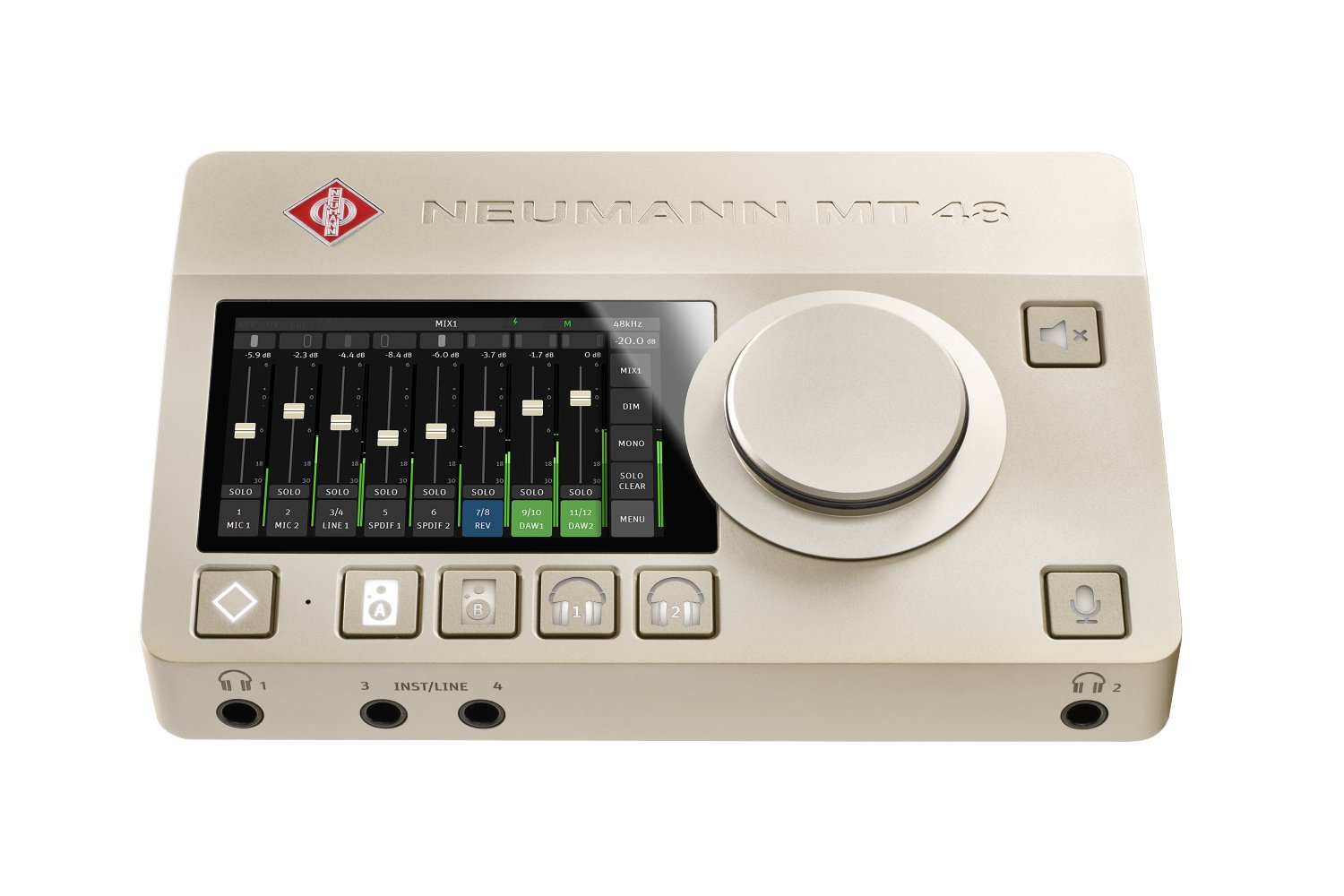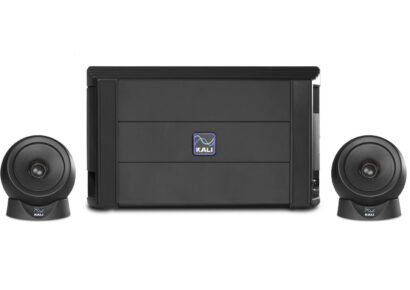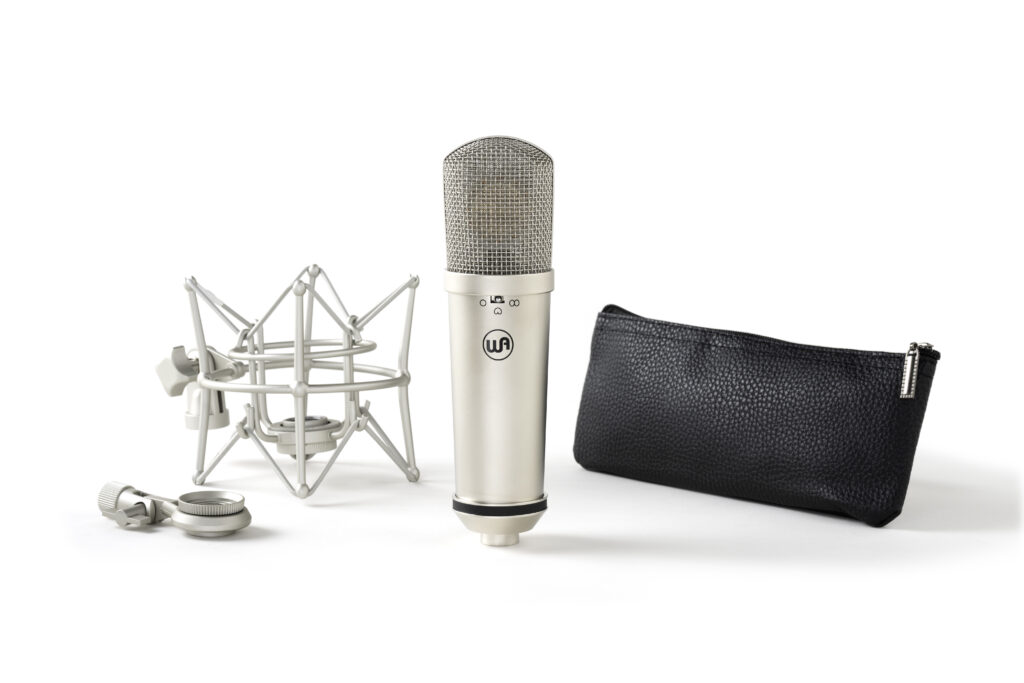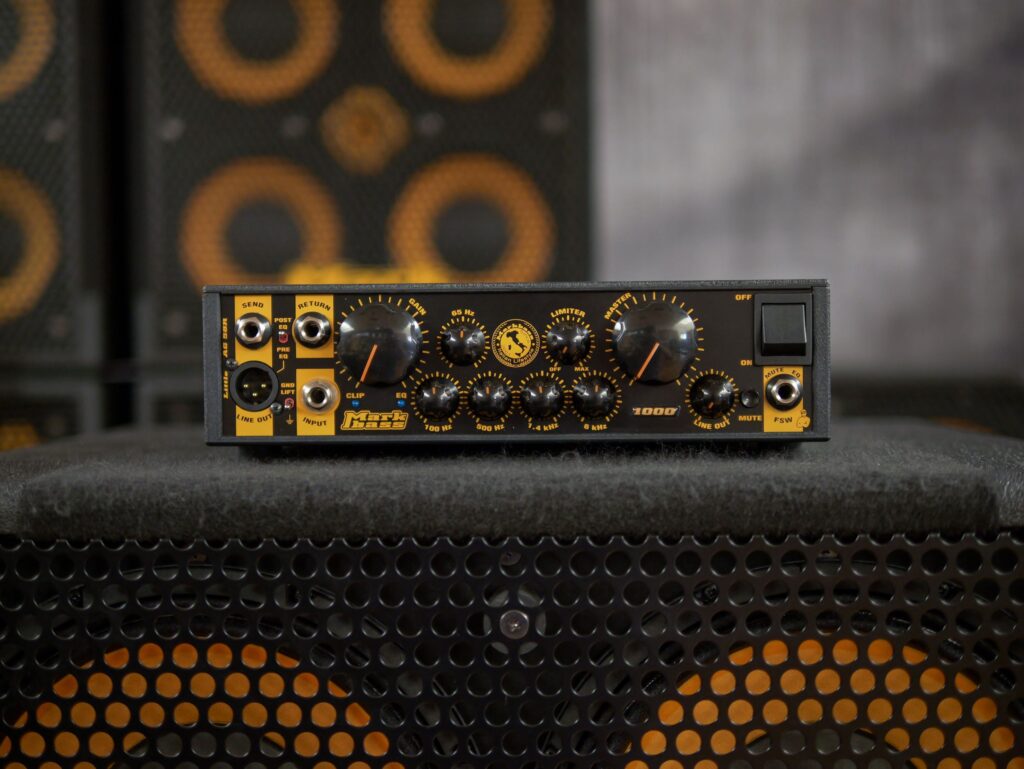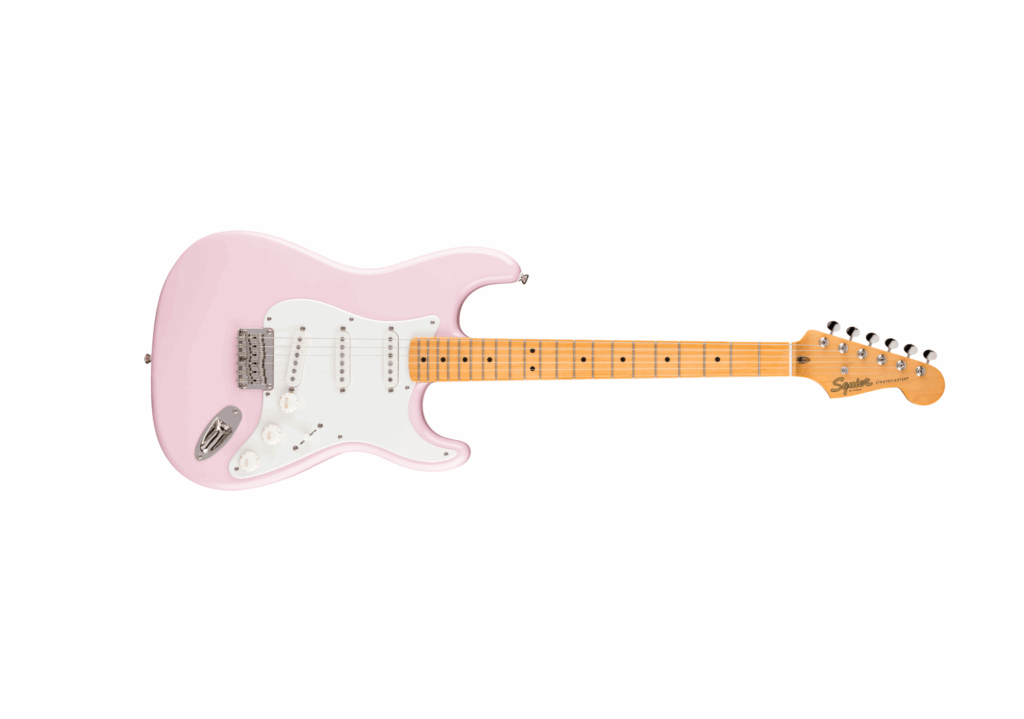Neumann MT 48 | Neumann | RRP: $3549
The Neumann MT 48 is one of the latest offerings from Neumann Berlin. A name synonymous with quality, the German heavyweights have remained at the top of the audio industry for almost a century. The brand has been long associated with the development of stellar high-end condenser microphones such as the U 47, U 67 and U 87.
Neumann MT 48 Review
With parent company Sennheiser acquiring Merging Technologies and integrating them with Neumann in mid-2022, many pondered the possibilities that this unification might lead to. Fast forward to 2023 and the answer can be found in the Neumann MT 48, a high-end 4-in and 8-out audio interface based on the foundation previously laid by the Anubis from Merging Technologies. Building upon this substructure, Neumann have implemented numerous tweaks to the unit’s hardware, UI and software design to make it their own.
Read more gear reviews here.
The first thing I noticed while unboxing the Neumann MT 48 was its sturdy zip case, other accessories include the unit’s power supply “with handy wall adapters for the US, EU, Asia and thankfully Australia”. In addition to this, two USB C cables for Data and Power are included as well as an extra USB C to USB A cable for those requiring this method of connectivity.
Audio interface
The Neumann MT 48 itself leaves a fantastic first impression with its sturdy metal casing and substantial rotary dial. The dial itself manages to avoid the “plasticky” and fragile feeling that such hardware controls can sometimes be afflicted with, instead offering a firm and satisfying turn across its entire rotation. The additional buttons on the face of the unit do feel smooth and “spongey” when pressed, but ultimately do nothing to detract from the air of quality that exudes from the unit itself.
Speaking of buttons, the top of the Neumann MT 48 features a monitor mute control, two buttons dedicated to speaker and mix set selection, and two more buttons used as headphone selectors “all configurable natively or via Neumann’s desktop application”. A built-in microphone is also situated on the unit’s face which can be engaged by a handy talkback button. Lastly, a home button and generously sized LCD touch display are implemented in the design of the unit, rounding out its hardware UI.
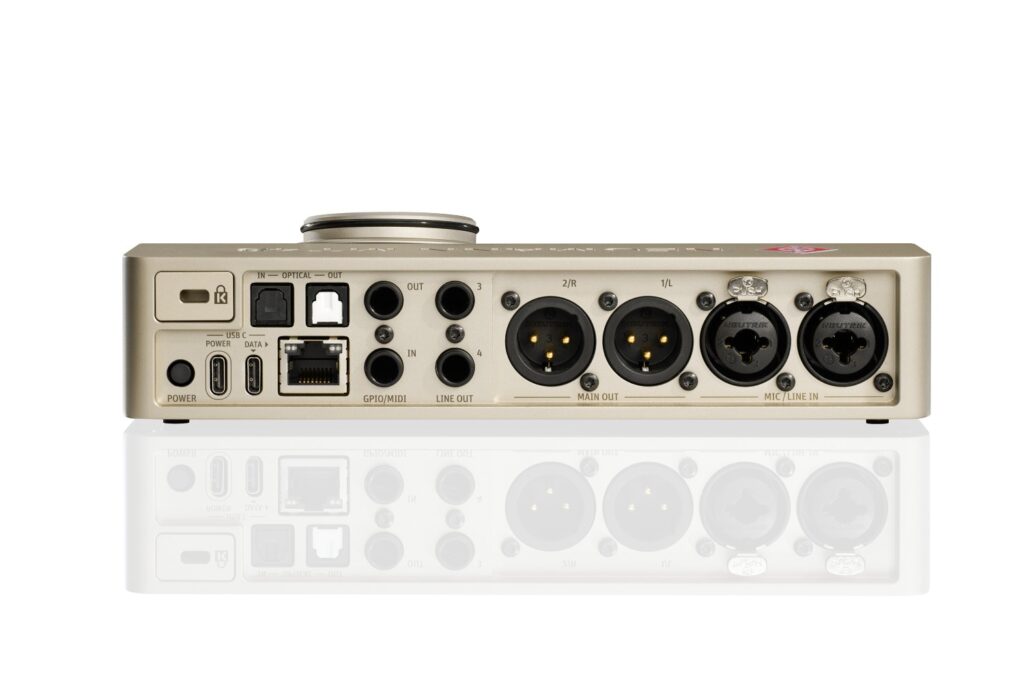
The MT 48’s rear panel boasts separate USB C plugs for power and data as for mobile use, the MT 48 may be used with a power bank (with a power delivery of at least 25 W) Accompanying these are Optical In and Out for ADAT or S/PDIF connectivity, an RJ-45 socket for AES67 connectivity or Ethernet power, and two more TRS connectors for MIDI I/O or use as general-purpose I/O. Two male XLRs make up the unit’s main L/R outputs, and two TRS sockets form the secondary outputs for an additional set of speakers or line devices. Two female Neutrik XLR/1/4” TRS combo sockets provide the first two inputs into the interface, rounding out the back panel as a whole. The front panel of the Neumann MT 48 is refreshingly simple offering two additional ¼” TRS Hi-Z or line inputs, and two balanced outputs for headphone monitoring.
The first thing I did upon connecting the MT 48 to my computer and monitor array was listen to some music through it. Cycling through a range of genres I was immediately impressed with the unit’s headphone amplifiers. Testing a variety of headphones I found that the MT 48’s headphone amps brought forth a certain degree of separation and clarity that made them a joy to use. Outside of the cans the MT 48 compared favourably against the resident audio interface in my project studio, coming out on top while referencing familiar material within my usual listening space.
Pre amps
The next thing on the agenda was to test the unit’s mic preamps which I did with a variety of source material including voice, direct guitar, mic’d guitar cabinet and some basic percussion. In all instances, the Neumann MT 48 left a glowing impression on me providing a clear and accurate reproduction of the source. Boasting up to 78dB of gain per channel, I was very pleased to note that there was next to no noise emanating from the unit for the duration in which I was using it, even with the preamp gain cranked or phantom power engaged.
During my time with the Neumann MT 48, I did notice that the unit tends to get rather warm. However, not once did I notice the unit’s inbuilt cooling fans kick into gear to reduce the temperature of the unit, so it’s safe to assume that this is normal, especially as the aluminium enclosure will act as a heatsink for the internal DSP. Regardless, this is worth noting that the fan operation is yet another tweakable feature within the unit settings so if a user were to encounter heat problems with their unit this could be easily addressed.
In particular, I must give praise to how intuitive the Neumann MT 48 is to use, I was able to locate and utilise any function I desired quickly and efficiently from adjusting the sample rate through to tweaking each parameter on the unit’s DSP effects or altering mix controls. This enabled me to immediately set about making music instead of wasting time thumbing through PDF files and internet forums. I would even go as far as saying I found myself having fun with the MT 48 within a very short period, inspired to be creative instead of being bogged down by unnecessary complexities or forced learning curves.
Utility functions such as the adjustment of gain pots, and tweaking of other parameters are accessed via the touch screen which then gives finite adjustment via the rotary control on the face of the unit. The unit’s LCD display is easy to read and the UI won’t have you scratching your head while scrambling to find what you need during your session.

The MT 48’s four onboard mixers provide a plethora of options for both monitoring and output routing, combining this functionality with a bundle of onboard DSP effects including EQ, Dynamic Control and Reverb. Most of these effects can be utilised for monitoring or in tracking, printed onto your recorded tracks (or both simultaneously) and sound fantastic. As a unique feature, it is also possible to record the dry signal and the processed signal at the same time. In USB I/O Settings you can specify separate driver output channels for the dry and the processed signal. I feel that the only glaring omission from the unit’s mainstay function is the inclusion of transport controls, however, many users would opt to attend to such matters within their DAW of choice regardless.
All in all, the MT 48 is a stellar debut for Neumann within the pro-level Audio Interface market, if this is a sign of things to come from the Berlin greats I am very eager to see where they go from here.
To keep reading about the MT 48, visit Neumann here.
